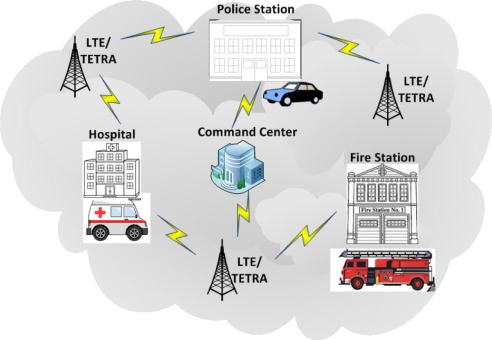Critical Communication
Command and Control (C&C) systems are deployed in a City, Building or secure room for Police, military or Manufacturing/ Utility plants, Ports, Airports facility that operates as the Secured, dispatch center with surveillance monitoring, coordination and alarm monitoring center all in one. Modern Command and Control solutions are data-driven with workflow automation, IoT integrations, smart geofences, and more. dynamic automation engine boosts productivity and enhances your push-to-talk investment.

Critical communications include mobile, radio telecommunication systems and devices that must provide reliable and secure communication at all times. They are usually referred to as business-critical and mission-critical communications networks. Communications are ‘critical’ when they are essential to the operation of an organization. Failure or disruption of communications either seriously impacts or halts an organization’s activities.
There are several senses of ‘critical’ that may be involved:

Business-critical – where comes failures severely disrupt business activity and may result in significant penalties. For example, power utilities face major financial penalties if comms failures during maintenance lead to downtime exceeding allowable targets.
Mission-critical – where comes failures stop or greatly degrade a mission activity. For example, emergency response during a disaster.
Safety-critical – where comes failures lead to property damage, injury, or loss of life. For example, communications failures during a SWAT team response.
Security critical – where comes failures lead to the loss or damage of sensitive data or a compromise of system integrity. For example, in banking systems.
There is no overall standard classification for a mission or business-critical network – however, mission-critical networks are those that are essential for some mission accomplishment (mostly public safety), and business-critical networks serve businesses that cannot operate without reliable communications (transport, electricity, oil and gas production etc.).
When we talk about mission-critical communications, it is paramount that first responders in the field are able to maintain connectivity to save our lives. Until recently, the dominant technologies used in networks for critical telecommunications were the ones that collectively are called LMR (Land Mobile Radio). These networks are designed for reliable voice communication and transmission of limited amounts of data. With the rapid development of technologies that enable the transmission of large amounts of data, including video transmission, such as LTE and 5G, broadband networks for critical communications are also represented.
Many countries are moving towards broadband-based networks, as they provide increased data speeds and enhanced capacity. However, Land Mobile Radio still holds an important place in mission-critical communications and has a proven track record for high availability and security.















